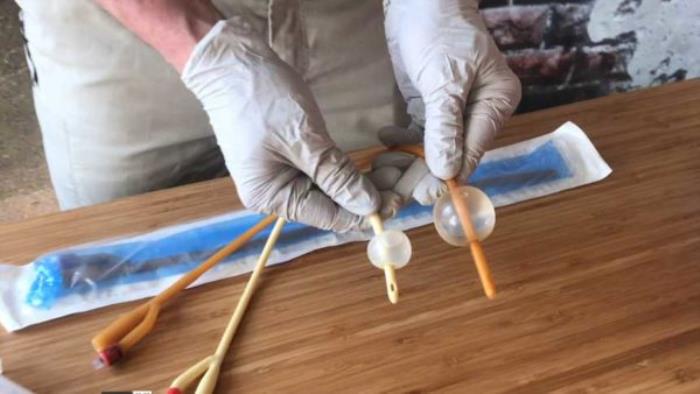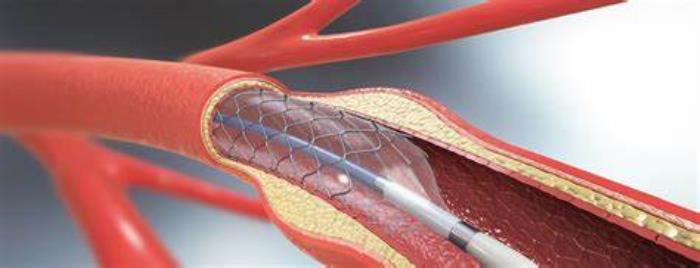Common Risks Associated with Angioplasty Procedures
While coronary angioplasty is generally safe, complications can arise, ranging from minor issues to more serious conditions. Understanding these risks helps patients stay vigilant and seek prompt care if needed.
Bleeding and Bruising at the Catheter Site
One of the most common risks of angioplasty is bleeding or bruising at the site where the catheter is inserted, typically in the groin or wrist. Although this is usually minor and resolves on its own, in some cases, excessive bleeding may require medical attention or even surgical intervention.

Risk of Blood Clots After Angioplasty
Despite its goal of improving blood flow, angioplasty can sometimes lead to the formation of blood clots in or near the treated artery. These clots can obstruct blood flow and increase the risk of heart attack or stroke. To mitigate this risk, patients are typically prescribed blood-thinning medications, which require careful monitoring.
Allergic Reactions to Contrast Dye or Medications
The contrast dye used during angioplasty to visualize the arteries can occasionally trigger allergic reactions. Symptoms may include rash, itching, or more severe responses like difficulty breathing. Additionally, some patients may react to medications administered during or after the procedure. A detailed medical history helps doctors anticipate and prevent such occurrences.
Artery Re-narrowing (Restenosis) After Angioplasty
Restenosis, the re-narrowing of the treated artery, is a potential long-term complication of angioplasty. Although the use of drug-eluting stents has significantly reduced this risk, some patients may still experience a recurrence, requiring further treatment or lifestyle modifications to maintain artery health.
Risk of Artery Damage During the Procedure
Angioplasty involves threading a catheter through the blood vessels, which carries a small risk of artery damage. This could lead to vessel perforation or tearing, potentially causing internal bleeding or other complications. Such risks are minimized through careful technique and the expertise of the medical team.
Potential for Heart Attack or Stroke
While coronary angioplasty is a highly effective and commonly performed procedure, it carries certain risks, including the possibility of a heart attack or stroke during or shortly after the procedure. These risks are generally low but can arise due to factors such as dislodged plaque or blood clots that may form during the operation. Advanced techniques and careful monitoring during angioplasty help minimize these risks significantly, ensuring patient safety.
Managing Infection Risk at the Catheter Site
Infection at the catheter insertion site, although rare, remains a potential concern after angioplasty. The risk is mitigated through sterile techniques during the procedure and proper wound care afterward. Patients are advised to monitor the site for signs of redness, swelling, or discharge and promptly report any unusual symptoms to their healthcare provider to prevent complications.
Impact of Angioplasty on Kidney Function
The use of contrast dye during angioplasty can pose a risk to kidney function, especially in patients with pre-existing kidney conditions or diabetes. This risk is carefully managed by limiting the amount of contrast dye used, ensuring proper hydration before and after the procedure, and closely monitoring kidney function through blood tests.
Rare but Serious Complications During Angioplasty
In rare cases, serious complications such as damage to the artery, excessive bleeding, or severe allergic reactions to the contrast dye can occur during angioplasty. These situations are typically addressed immediately by the medical team using advanced equipment and life-saving techniques. Such complications underscore the importance of having the procedure performed by experienced cardiologists in well-equipped facilities.

Risk Factors That Increase the Likelihood of Complications
Certain patient-specific factors can elevate the risk of complications from angioplasty. These include advanced age, extensive coronary artery disease, diabetes, kidney dysfunction, or a history of prior cardiac interventions. Comprehensive pre-procedure assessments help identify these risks, enabling the cardiologist to develop a tailored approach to minimize potential issues.
How Cardiologists Minimize Risks During the Procedure
Cardiologists employ several strategies to ensure patient safety during angioplasty. These include using advanced imaging techniques to guide the catheter, administering anticoagulant medications to prevent clot formation, and continuously monitoring vital signs throughout the procedure. Their expertise plays a crucial role in successfully navigating complex cases and reducing risks.
Long-Term Risks Following Coronary Angioplasty
Even after a successful procedure, long-term risks like restenosis (re-narrowing of the artery) or stent thrombosis (formation of blood clots within the stent) may occur. Drug-eluting stents have significantly reduced the incidence of restenosis, but adherence to prescribed medications and lifestyle changes is vital to minimize these risks.
Importance of Lifestyle Changes to Avoid Complications
Adopting a heart-healthy lifestyle is essential for preventing complications after angioplasty. This includes maintaining a balanced diet, engaging in regular physical activity, avoiding smoking, managing stress, and controlling chronic conditions like hypertension and diabetes. Such measures not only enhance recovery but also reduce the likelihood of future cardiac events.
Warning Signs to Watch for After the Procedure
Post-procedure, patients should remain vigilant for warning signs such as severe chest pain, difficulty breathing, excessive swelling or bleeding at the catheter site, or fever. Prompt medical attention is critical to address these issues and ensure a smooth recovery process.
Role of Antiplatelet Medications in Risk Management
Antiplatelet medications, such as aspirin or clopidogrel, are often prescribed after angioplasty to prevent blood clots and maintain blood flow through the treated artery. Adhering to the prescribed medication regimen is crucial for reducing the risk of complications like restenosis or stent thrombosis.
Recovery Tips to Reduce Complication Risks
Patients can enhance their recovery and minimize risks by following their doctor’s post-procedure care instructions. This includes resting for the recommended period, keeping the catheter site clean, avoiding heavy lifting or strenuous activities, and attending all follow-up appointments for ongoing evaluation and care.
When to Seek Medical Attention Post-Angioplasty
Patients should contact their doctor immediately if they experience symptoms such as persistent chest pain, signs of infection at the catheter site, or unexplained swelling in the legs. Early intervention is vital in addressing any post-procedure complications effectively.
How Age Affects the Outcome of Coronary Angioplasty
Learn about how age can influence the success of coronary angioplasty. This article discusses the factors that affect older adults' recovery rates and complications during angioplasty procedures, providing valuable insights into how age plays a role in cardiovascular interventions.
Understanding the Causes of Coronary Artery Disease
Discover the underlying causes of coronary artery disease. This blog post explores the major risk factors such as high cholesterol, hypertension, and lifestyle choices, helping readers understand how these contribute to the development of CAD and the importance of prevention and early detection.
Conclusion: Balancing Risks and Benefits of Coronary Angioplasty
Coronary angioplasty is a transformative procedure that provides significant relief from symptoms of coronary artery disease and improves quality of life. While it carries certain risks, these are manageable with proper care and precautions. By understanding potential complications and adhering to medical advice, patients can maximize the benefits of angioplasty while minimizing associated risks.
Best Coronary Angioplasty in India
The Best Coronary Angioplasty in India is a minimally invasive procedure that helps restore blood flow to the heart by widening blocked arteries, improving cardiovascular health and reducing chest pain.
Best Coronary Angioplasty Hospitals in India
The best coronary angioplasty hospitals in india offer state-of-the-art facilities and highly skilled cardiology teams, ensuring comprehensive pre- and post-operative care for effective treatment outcomes.
Coronary Angioplasty Cost in India
The coronary angioplasty cost in india is affordable, with transparent pricing and flexible options, making high-quality cardiovascular care accessible for patients.
Best Coronary Angioplasty Surgeons in India
The Best Coronary Angioplasty Surgeons in India are experienced specialists in interventional cardiology, dedicated to providing personalized and effective treatment for each patient.
FAQs
What are the most common risks of coronary angioplasty?
Common risks include bleeding, infection, restenosis, and rare occurrences of heart attack or stroke during the procedure.
How often does restenosis occur after angioplasty?
Restenosis is less common with drug-eluting stents, occurring in approximately 5–10% of cases.
Can angioplasty cause heart attacks?
Although rare, heart attacks can occur if plaque or a blood clot obstructs blood flow during the procedure.
What steps are taken to prevent complications during angioplasty?
Cardiologists use sterile techniques, advanced imaging, and anticoagulant medications to minimize risks and ensure a safe procedure.
How can I reduce the risk of blood clots after angioplasty?
Taking prescribed antiplatelet medications, following a heart-healthy lifestyle, and attending regular follow-ups are key to preventing blood clots.